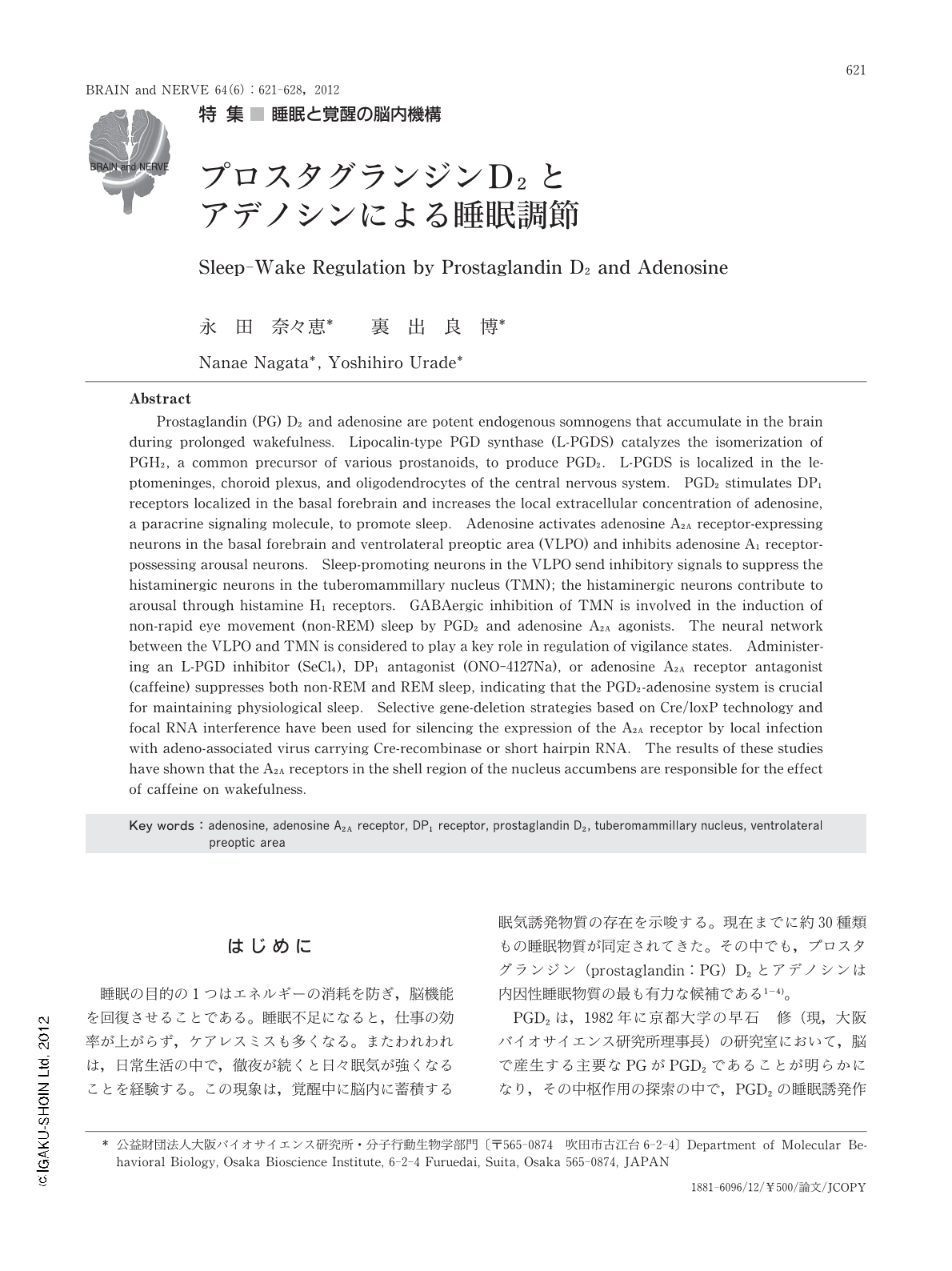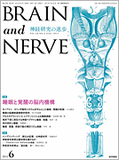Japanese
English
- 有料閲覧
- Abstract 文献概要
- 1ページ目 Look Inside
- 参考文献 Reference
はじめに
睡眠の目的の1つはエネルギーの消耗を防ぎ,脳機能を回復させることである。睡眠不足になると,仕事の効率が上がらず,ケアレスミスも多くなる。またわれわれは,日常生活の中で,徹夜が続くと日々眠気が強くなることを経験する。この現象は,覚醒中に脳内に蓄積する眠気誘発物質の存在を示唆する。現在までに約30種類もの睡眠物質が同定されてきた。その中でも,プロスタグランジン(prostaglandin:PG)D2とアデノシンは内因性睡眠物質の最も有力な候補である1-4)。
PGD2は,1982年に京都大学の早石 修(現,大阪バイオサイエンス研究所理事長)の研究室において,脳で産生する主要なPGがPGD2であることが明らかになり,その中枢作用の探索の中で,PGD2の睡眠誘発作用が発見された5)。一方,アデノシンは,1970年代にイヌの脳室内へのアデノシンの投与が睡眠を誘発することや,カフェインがアデノシン受容体の拮抗薬として覚醒作用を示すことが証明され,睡眠物質として認められるようになった。
本稿では液性の内因性睡眠物質としてのPGD2とアデノシンについて解説する。
Abstract
Prostaglandin (PG) D2 and adenosine are potent endogenous somnogens that accumulate in the brain during prolonged wakefulness. Lipocalin-type PGD synthase (L-PGDS) catalyzes the isomerization of PGH2,a common precursor of various prostanoids,to produce PGD2. L-PGDS is localized in the leptomeninges,choroid plexus,and oligodendrocytes of the central nervous system. PGD2 stimulates DP1 receptors localized in the basal forebrain and increases the local extracellular concentration of adenosine,a paracrine signaling molecule,to promote sleep. Adenosine activates adenosine A2A receptor-expressing neurons in the basal forebrain and ventrolateral preoptic area (VLPO) and inhibits adenosine A1 receptor-possessing arousal neurons. Sleep-promoting neurons in the VLPO send inhibitory signals to suppress the histaminergic neurons in the tuberomammillary nucleus (TMN); the histaminergic neurons contribute to arousal through histamine H1 receptors. GABAergic inhibition of TMN is involved in the induction of non-rapid eye movement (non-REM) sleep by PGD2 and adenosine A2A agonists. The neural network between the VLPO and TMN is considered to play a key role in regulation of vigilance states. Administering an L-PGD inhibitor (SeCl4),DP1 antagonist (ONO-4127Na),or adenosine A2A receptor antagonist (caffeine) suppresses both non-REM and REM sleep,indicating that the PGD2-adenosine system is crucial for maintaining physiological sleep. Selective gene-deletion strategies based on Cre/loxP technology and focal RNA interference have been used for silencing the expression of the A2A receptor by local infection with adeno-associated virus carrying Cre-recombinase or short hairpin RNA. The results of these studies have shown that the A2A receptors in the shell region of the nucleus accumbens are responsible for the effect of caffeine on wakefulness.

Copyright © 2012, Igaku-Shoin Ltd. All rights reserved.


